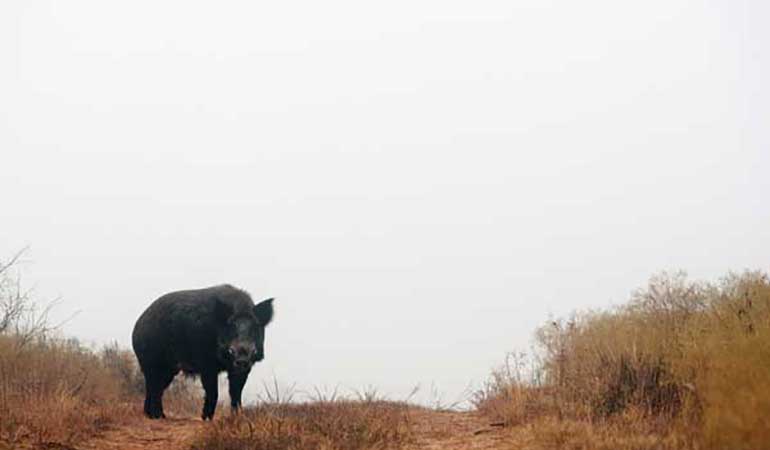
Print Recipe
The proliferation of invasive wild hogs across the lower portion of the United States has created a golden opportunity for those of us who like to load up our freezers with a seemingly endless supply of exceptional meat.
When you’re in hog country, you can’t help but notice their path of destruction as they root their way across the land, tearing up food plots and crops while eating everything in sight.
After a long day of wreaking havoc on the countryside, wild hogs get down to business and reproduce with near rabbit-like speed, making it necessary for responsible hunters to do their part to help control the population boom of these delicious nuisance creatures.
Without your help, wild hogs will soon take over the country.
Handle With Care
You might have heard feral pigs aren’t fit to eat. Older boar hogs can be a tad “aromatic” when cooking, but most average-sized wild swine don’t behave much differently in the oven or barbecue than farm-raised pork. As with any other animal, they are what they eat.
When they spend the day digging up your newly planted corn, they’ll make better table fare than if they have to work harder for their own supper and spend more time searching and less time destroying.
When field dressing and butchering, wear rubber gloves and be careful to avoid cross-contamination of hide and meat. Wild hogs aren’t known for being especially sanitary. They’re pigs after all. They wallow in waste, urinate on themselves and leave glandular secretions behind as a calling card.
It’s important to avoid cutting into their scent glands while processing or the resulting musky secretions will taint the meat. Once tainted, there’s no sure cure that will mask the unpleasant taste. Much of the bad rap wild hogs receive for their unpalatable nature is undoubtedly due to poor handling by the processor.
When properly handled, the meat can be used as a suitable substitute with any recipe for domestic pork.
Prepare To Feast
Soaking butchered hog parts in an ice water bath for a day or two will mellow out the flavor and give the meat a lighter color. Add 3⁄4 cup of cider vinegar and 2 cups of lemon juice to the ice water and change it every 12 hours or so until the water is clear.
If the meat takes on a blue tinge and gets darker in color, drain the water, refill and add a little less vinegar. After soaking, pat the meat dry and thoroughly clean the cooler with hot water and a mild water and bleach solution.
Wild hogs have much less fat than domestic pigs. Less fat means they are also less forgiving when cooked. Depending on their diet, it’s often a good idea to trim away much of the visible fat, especially on older males, since the fat can be off-tasting.
Lean feral swine are best cooked slowly, at lower temperatures than domestic pork, in order to break down the muscle into tender morsels of porky goodness. One-inch thick steaks and chops can be grilled, sautéed or pan-seared over medium-high heat. Lower the temperature with thicker cuts so the outside won’t be tough and dry before the inside is done.
No discussion of pork cookery would be complete without mention of the elephant in the room, trichinosis. For decades, we’ve been warned to cook pork thoroughly or risk contacting this unpleasant disease that can include, among other symptoms, gastrointestinal distress, muscle cramps and facial swelling.
Unfortunately, some home cooks have taken it to the extreme and cook any pork product until it is tough, dry and chewy. Cooking your meat to an internal temperature of 137 degrees will kill any trichinella parasites that may have invaded your wild hog.
To be on the safe side, use a reliable meat thermometer and cook to 145 degrees for whole muscles and 160 degrees for ground meat.
If you’re fortunate enough to live near huntable populations of wild hogs, you owe it to yourself to give hog hunting a try. Most hog-infested states have open seasons and access to public lands, allowing hunters the chance to put meat on the ‘cue without a costly trip to the market.
Do your part for the environment and help reduce the population of these invasive yet delectable creatures. Besides, they’re a hoot to shoot!
To make the most out of that delicious pork, try these tasty recipes:
Wild Hog Chile Verde Recipe
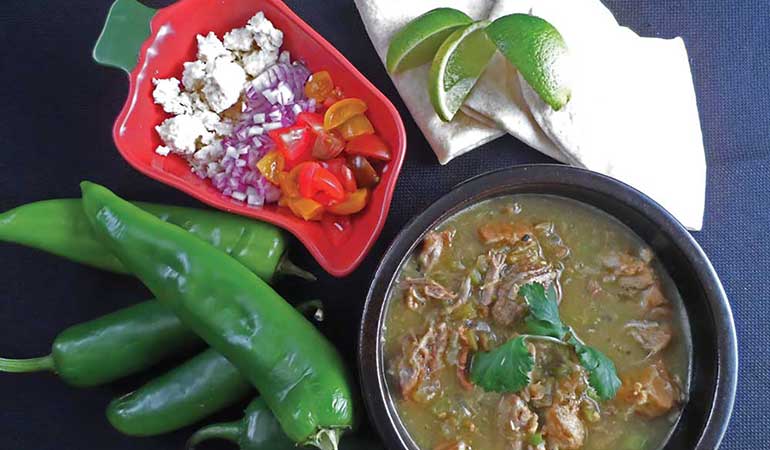
This flavorful Southwestern stew can be served in bowls, topped with shredded cheese and chopped onions and served with warm flour tortillas on the side.
Serves: 8-10Prep time: 20 minutesCook time: 3 hours
Ingredients:
- 3 pounds (about 6 cups) wild hog shoulder, cut into 1-inch pieces
- 3 tablespoons vegetable oil
- 2 ½ quarts chicken broth
- 2 cups yellow onion, diced
- 8 garlic cloves, minced
- 2 green bell peppers, diced
- 4 Anaheim peppers, diced
- 3 jalapeño peppers, seeded and diced
- 1 tablespoon dried oregano flakes
- 2 tablespoons chili powder
- 1 tablespoon ground cumin
- 1 teaspoon cayenne pepper
- 4 cups fresh tomatillos, skin removed and quartered
- 1 cup fresh cilantro leaves, chopped
- Salt and pepper
Get the Recipe: Wild Hog Chile Verde Recipe
Marinated Wild Hog Loin Chops with Blueberry Apple Compote Recipe
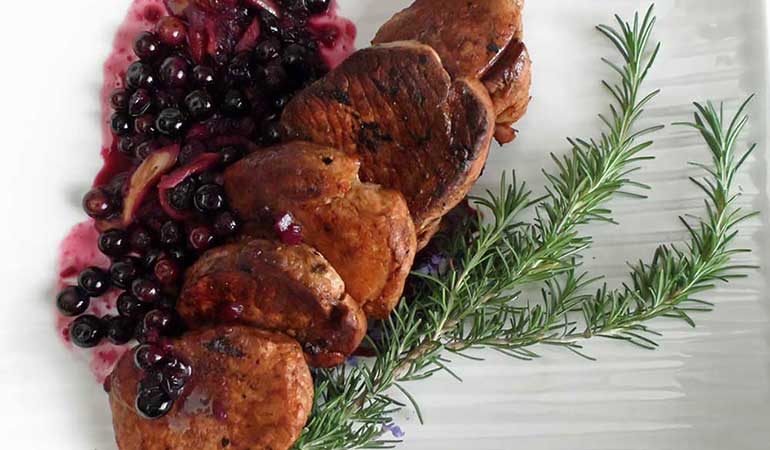
Lean wild hog loin chops will benefit from several hours in a flavorful marinade, but be careful not to overcook them or they will be dry and chewy.
Serves: 4Prep time: 15 minutesCook time: 15-20 minutes
Hog Loin Chops Ingredients:
- 8 loin chops, cut 1 inch thick (bone in or out)
- 2 tablespoons butter
Marinade Ingredients:
- 2 cups apple juice
- 1 tablespoon gingerroot, minced
- 3 cloves garlic, minced
- ¼ cup red onion, minced
- ¼ cup olive oil
- ½ teaspoon kosher salt
Blueberry Apple Compote Ingredients:
- 1 tablespoon butter
- 2 cups frozen blueberries
- 1 large apple, any variety, peeled, cored and cut into matchsticks
- ¼ cup onion, minced
- 3 tablespoons water
- ¼ cup sugar
- ¼ teaspoon salt
- 1 tablespoon lemon juice
Get the Recipe: Marinated Wild Hog Loin Chops with Blueberry Apple Compote Recipe
Pulled Hog Shoulder or Hindquarter Roast Recipe
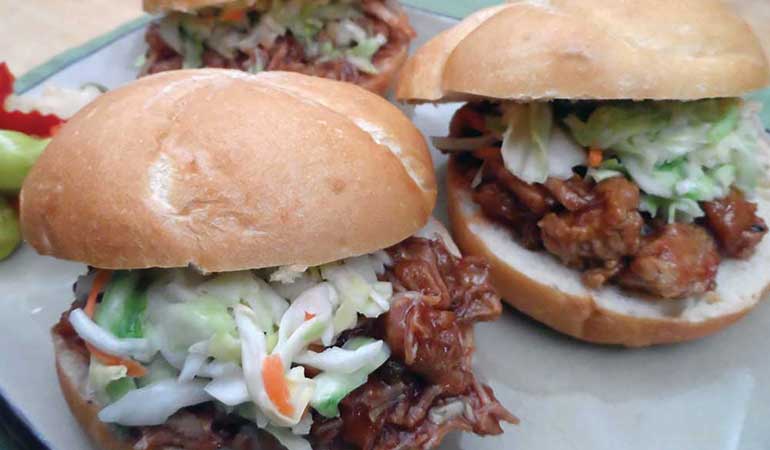
Smoke, roast or grill your wild hog shoulder or hindquarter – all three methods will lead to a delicious outcome.
Serves: 2-4Prep time: 5 minutesCook time: 8-10 hours
Ingredients:
- 1 wild hog shoulder or hindquarter roast, bone in or out
- ¼ cup Kosher salt
- ¼ cup brown sugar
- ¼ cup paprika
- 2 tablespoons each black pepper, onion powder, garlic powder
- 1 tablespoon cayenne pepper
- 2 cups barbecue sauce
Get the Recipe: Pulled Hog Shoulder or Hindquarter Roast Recipe
Wild Hog Apple Breakfast Sausage Recipe
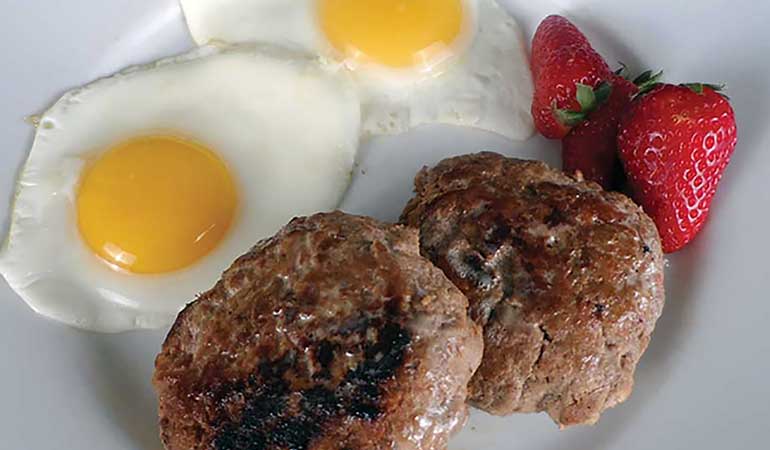
The dried fruit and apple juice in this Wild Hog Apple Breakfast Sausage Recipe adds a hint of sweetness, and the red pepper flakes provide just enough heat.
Serves: 10Prep time: 30 minutesCook time: 30 minutes
Ingredients:
- 8 cups ground wild hog
- ½ pound bacon, finely diced
- 2 tablespoons rubbed sage
- 1 teaspoon ground mustard
- 1 tablespoon crushed red pepper flakes
- 2 tablespoons kosher salt
- 2 tablespoons medium ground black pepper
- 1 cup apple juice, chilled
- 1 ½ cups dried apple, minced
Get the Recipe: Wild Hog Apple Breakfast Sausage Recipe









